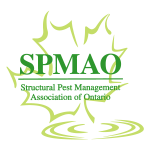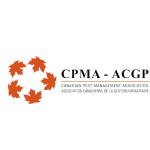A structural exterminator is the most common type of exterminator. The license they have is specific to the procedures they do. Other types of extermination require other types of licenses, education and permits. The is all controlled by the Ministry of the Environment, Conservation and Parks. MECP for short. They are the ministry that handles all aspects of the Ontario environment. Conservation of the environment is their primary goal as they are the drivers of reversing climate change in Ontario. They do this in many ways, by protecting the environment they protect us, the people who live in Ontario. The ministry controls the sale, storage, use, transportation and disposal of pesticide products. Not only commercial but domestic as well. Pesticides in Ontario are organized by class systems. The primary class system is :
If you are looking for an exciting career in pest control, make sure to read our posts on Pest Control Jobs!
– Class A: Manufacturing, this class represents the chemicals that can be used in the manufacturing of pesticides and are strictly limited to Vendors, one of the structural extermination license types.
– Class B: Restricted, these chemicals are not allowed to be used as they threaten the ecology of Ontario greatly and must be restricted in their use. These chemicals can be used but only with specific order and allowance by the Ministry.
– Class C: Commercial, this is the class of chemicals a structural exterminator and other exterminators will generally make use of when treating infestations of insects. This section requires either a license or certification for individuals like farmhands who need to use rodenticide to deal with mice and rats on an industrial farm.
– Class D: Domestic, these are chemicals sold in stores and available to anyone without restriction. These chemicals have much less of an active ingredient than commercial grades and they are designed to be safe, even when used incorrectly.
– Class E: Treated Seeds, This is an unusual class that covers the use of soybean seeds treated with neonicotinoids. These are highly dangerous chemicals and the use is restricted to specifically certified technicians.
As can be seen, this list is comprehensive of all types of pesticides and none, not even domestic pesticides and poisons can be sold without the express permission of the ministry. To use these chemicals above class D you will need a license. What kind of license? An Exterminator License. Exterminators are individuals licenced by the Ministry to perform exterminations of various pests in various environments. There is a land exterminator who works with Aerially dispersed chemicals over farms and industrial food plants while the water exterminator works with dangerous molluscs and choking seaweed that damages the natural ecosystem of Ontario. The structural exterminator is the one most people will know about. They work on the ground in homes and commercial properties eliminating common pests that most people are aware of. These can include cockroaches, earwigs, millipedes, and any other crawling insect. You can also make use of commercial-grade rodenticide though its use independently of commercial-grade pesticides does not require licensing but training and certification. To become a structural exterminator you must contact the Ministry of the environment and sign up for the relevant structural exterminator exam. You will receive textbooks and, if you would like, can take classes on the subjects as well. When you feel ready you will take the exam, normally it is set for two months after the textbooks have been sent. The exam is in two parts, one open book which covers the specific type of extermination you will be doing, in this case structural, and a core closed book exam that covers general knowledge of all aspects of extermination in Ontario.






